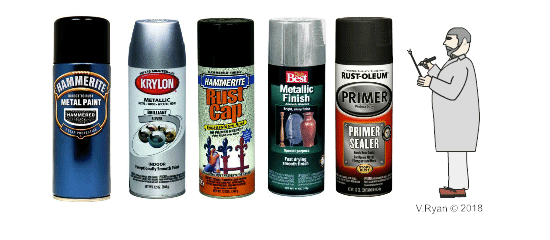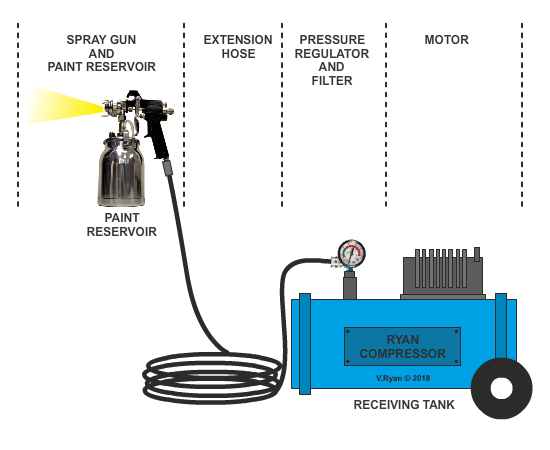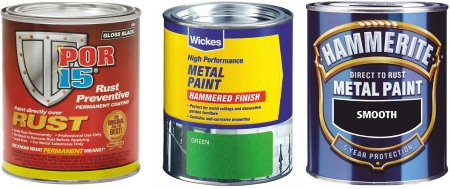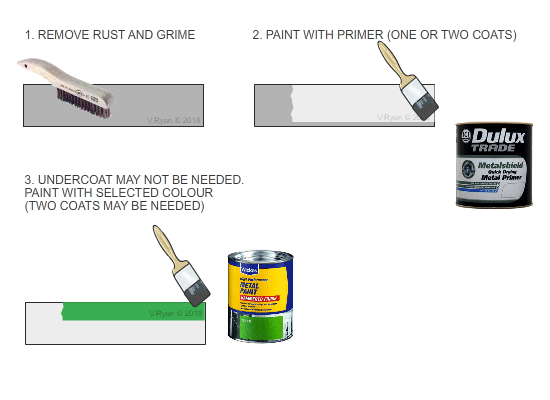Spray paints (in the form of spray cans), can be bought straight off the shelf of most hardware stores. The surface to be sprayed must be clean, through the use of abrasives. A primer and an undercoat may still be required. The advantage of this system, is that the spray can be used straightway. Spray cans are often used to spray large areas relatively quickly. If used carefully, they deliver a high quality finish. They are a very convenient delivery system for paint.
The metal being sprayed may need a primer and undercoat, although this depends on the instructions printed on the can. For example, Hammerite paint can be applied to a surface, without the need for a primer or undercoat. On the other hand, some cheaper paint sprays, need a carefully cleaned surface, prepared with primer and an undercoat.



Paints are categorised is being water or oil (solvent) based. Most paints used for coating metal are solvent based paints, due to their durability and lifespan.
Some water based paints (acrylic paints), claim to be suitable for metal surfaces and they are much more environmentally friendly. They dry more rapidly and do not produce the amount of odour associated with solvent based paints. After use, brushes and equipment can be cleaned in soapy water. These paints are supplied in a wide range of colours and shades.
Solvent based paints are the most common for use on metal surfaces, but they are more damaging to the environment and the health of humans. Brushes and equipment have to be cleaned with thinners or white spirit, which is also damaging to the environment. When these paints are drying, the solvents evaporate, releasing volatile organic compounds (VOCs) into the atmosphere. However, these paints generally give a superior finish, that last much longer than the water based paints, especially if painting outside.
